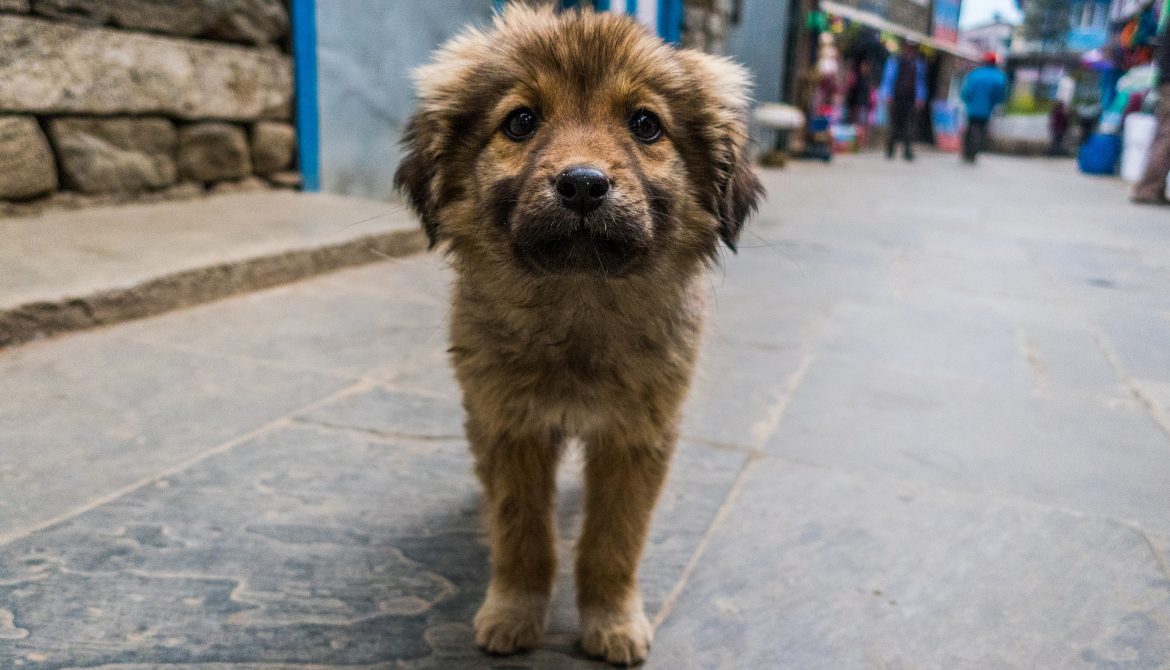As a Pet Owner, you want to ensure road safety for your dog when you’re out and about. And while you may feel that you have to be hyper-vigilant in busy areas, which is true, there are also a few habits that you can teach your dog to further prevent any accidents.
In this guide, we’re going to talk about how to improve your leash-training game so that your dog is extra safe around cars.

Since we’re talking about road safety for dogs, we wanted to make a Mad Max reference. Unfortunately, this picture of a modified truck was the only relevant (and free) stock image we could find.
What are some of the dangers?
In order to make your walks with your dog safer, it’s helpful to anticipate some of the behaviours that might lead to your dog getting too close to traffic.
Here are some common ones:
- Pulling at crosswalks
- Lunging out of excitement
- Escaping from you
We’ll talk about the simple corrections for these behaviours, but it will help if you have some good equipment, too. A loose collar, for instance, is recipe for disaster if you have an escape-artist dog. Retractable leads are also not great because you need immediate control when it comes to keeping your dog out of traffic.
The best set that you can use when training your dog is a basic, sturdy lead and a harness that attaches in the front. This will allow you to quickly change direction without discomfort around your dog’s neck. And, you’ll both feel more secure.
Now, let’s move onto the trouble-shooting.
How to prevent pulling
Dogs tend to want to pull their Owners everywhere. And, if you tend to walk the same route often, your dog will probably anticipate crosswalks and try to cross ahead of you.
You can counter this behaviour by teaching your dog to sit at every crosswalk. This is an easy remedy, especially if your dog already knows how to sit on command. Simply reward your dog with treats every time you get them to sit at the crosswalk, and soon, they’ll do it without prompting.
Lunging
Lunging is dangerous when it comes to road safety because your dog could lunge into traffic, perhaps even pulling you along with them.
Your dog may lunge when they see something particularly exciting, like another dog, cat, or other animal. A dog may also lunge when they see someone they know, or they get closer to the dog park.
Because lunging is usually the result of an over-excited dog, there are a few ways to go about limiting the behaviour. First, make sure your dog gets plenty of exercise, so that they don’t have pent-up energy.
Another way to phase out the lunging behaviour is through exposure. If, for instance, your dog lunges to get to their favourite tree, you can follow these simple steps:
- Notice when your dog sees the target and starts to get excited
- Have the dog sit calmly for a few seconds before giving the treat
- Start walking towards the target again
- The moment that the excitement turns to pulling behaviour, turn around and walk away from the target
- Try again, getting closer and closer to the target during each attempt (this will likely take place over a few training sessions)
- When your dog remains calm until you’ve almost reached the target, have them sit calmly for 10 seconds before giving the treat. Allow them to approach the target completely, with plenty of praise
Although this may not seem helpful, the training will carry over to other situations, too. If you see a cat on the sidewalk ahead, for instance, have your dog sit and wait. Once the cat has moved on or your pooch is calm enough to continue, you can proceed with your journey.
Eventually, your dog will look to you before lunging after exciting things. Even off-leash, this training will encourage your dog to think twice before chasing after something. This is great if your dog is sometimes off-leash in a backyard. Just be patient – this training process is going to be longer than teaching them to sit at the crosswalk.
Escaping from you
Now, this is the most concerning habit when it comes to teaching your dog road safety. Whether the lead slipped out of your hand or your dog slipped through the front door, it’s important to be able to get your dog back under control as quickly as possible.
At the core of this training are going to be the commands sit and come.
The reason why sit is your dog’s first command is because it’s a useful tool to keep them safe. After all, when it comes to road safety, you don’t always want your pooch returning you automatically. By having them sit, you’ll be able to go to them to reattach the lead. You can also check there is nothing dangerous between the two of you if you call them to you.
Remember, even if you’re a bit peeved that your dog got away from you, don’t punish them. That will make them less inclined to follow directions the next time they taste a bit of freedom. Instead, have them sit and stay, and then reward them.
Ready for road safety? Time to hit the streets!
Whether you live in a high-traffic area or not, this is absolutely essential training for your pooch. As a mindful Dog Owner, you likely already do what you can to watch the traffic around you. However, it will make you feel so much better to have these extra road safety measures in place.
Are you looking for someone to keep your dog extra safe on their next walk? Book a Mad Paws Dog Walker!


2 comments
Hi there! Such a great post, thank you!
This is a really great post! I have trained my dog to walk beside me, not in front of me 🙂 Keep safe always!